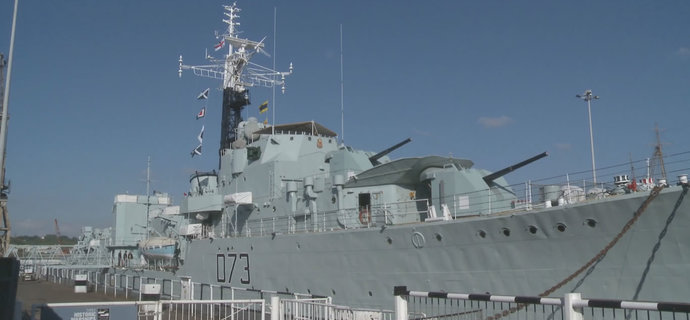
The Navy units embarked on the USS Hornet that participated in the Apollo 11 recovery were: Helicopter Anti-submarine Warfare Squadron Four (HS-4) flying the Sikorsky SeaKing SH-3D helicopter Underwater Demolition Teams Eleven and Twelve (UDT-11 and UDT-12) Airborne Early Warning Squadron VAW-111 flying the Grumman E-1B Tracer, and Fleet Logistics Support Squadron VR-30 flying the Grumman C-1A Trader. Armstrong and Aldrin were the first two humans to walk on the Moon. McCain (CINCPAC) and a number of other dignitaries were present while Hornet recovered astronauts Neil Armstrong, Buzz Aldrin and Michael Collins and their spacecraft Columbia.

On July 24, 1969, President Richard Nixon, ADM John S. USS Hornet (CVS-12) was selected by the Navy as the Prime Recovery Ship (PRS) for Apollo 11, America’s first lunar landing mission. For the next two months, strikes were made against positions on Formosa, Luzon, Saigon, Cam Ranh Bay in French Indo-China, and Hong Kong. Hornet and Task Force 58 began intensive operations in the Philippines and surrounding areas. Hornet participated in the Battle of Leyte Gulf, launching 2 long-range strikes against a rapidly retiring Japanese fleet and scoring hits on several capital ships. Hornet air group VF-2 had the distinction of being the top fighter squadron in the Pacific with more total victories and more “ace” pilots then any other fighter squadron up to that time. Hornet participated in the Western Carolina Islands operation with air support strikes on Peleliu.

June 19īattle of the Philippine Sea where pilots from Hornet and other carriers destroyed enemy aircraft with minimal losses in what came to be known as the “Great Marianas Turkey Shoot”. USS Hornet (CV-12) was commissioned November 29, 1943, becoming the eighth ship to bear the name. “Jocko” Clark came quickly as she joined famed Task Force 58. Her combat debut as the flagship of Rear Admiral J.J. USS Hornet left Pearl Harbor en route to the forward area.


 0 kommentar(er)
0 kommentar(er)
